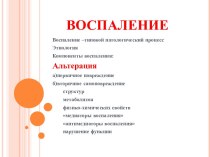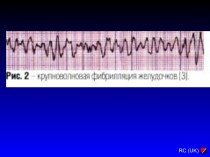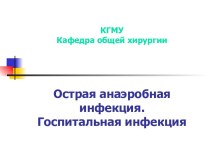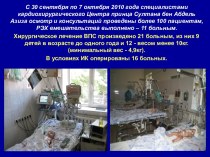- Главная
- Разное
- Бизнес и предпринимательство
- Образование
- Развлечения
- Государство
- Спорт
- Графика
- Культурология
- Еда и кулинария
- Лингвистика
- Религиоведение
- Черчение
- Физкультура
- ИЗО
- Психология
- Социология
- Английский язык
- Астрономия
- Алгебра
- Биология
- География
- Геометрия
- Детские презентации
- Информатика
- История
- Литература
- Маркетинг
- Математика
- Медицина
- Менеджмент
- Музыка
- МХК
- Немецкий язык
- ОБЖ
- Обществознание
- Окружающий мир
- Педагогика
- Русский язык
- Технология
- Физика
- Философия
- Химия
- Шаблоны, картинки для презентаций
- Экология
- Экономика
- Юриспруденция
Что такое findslide.org?
FindSlide.org - это сайт презентаций, докладов, шаблонов в формате PowerPoint.
Обратная связь
Email: Нажмите что бы посмотреть
Презентация на тему Оценка развития детей младшего возраста
Содержание
- 2. IntroductionThis work presents an overview of the
- 3. The stages of
- 4. Piaget's Stages of Cognitive Development
- 5. Sensory Motor Period (0 - 24 months)
- 6. The Preoperational Period (2-7 years)
- 7. Early Social Emotional Development1. Nature and nurture
- 8. 14. The family’s culture influences all areas
- 9. Early mental
- 10. The drive to explore and master one’s
- 11. Three Major Elements of Social Emotional Wellness
- 12. Regulation and Stress in Young Babies
- 13. Temperament. Temperament Traits. Appears to be biologically
- 14. Temperament Types
- 15. Temperament Types Flexible, Fearful, and Feisty Flexible FearfulFeisty
- 16. The Developmental Continuum from Birth to 15 months: Social and Emotional Indicators*
- 17. The Developmental Continuum from 12 months to 2 ½ years: Social and Emotional Indicators (cont’d)
- 18. The Developmental Continuum from Age 2 ½
- 19. Brain Development When little was known about
- 20. Types of Brain DevelopmentBrain development occurs unevenly,
- 21. Visual and auditory development the development of
- 22. Language developmentthe development of language and speaking
- 23. Physical and motor development – the development
- 24. Emotional and social development – the development
- 25. Parents, as the primary care givers for
- 26. Infant and Pre-school tests Infant scales and
- 27. Pre-school children show a wide variety in
- 28. The Stanford-Binet: Fourth Edition (2 to adult)
- 29. Conclusion Testing children is a difficult process
- 30. Скачать презентацию
- 31. Похожие презентации
IntroductionThis work presents an overview of the development of intellectual abilities. Children are not little adults. Until they reach the age of 15 or so they are not capable of reasoning as an adult. The following
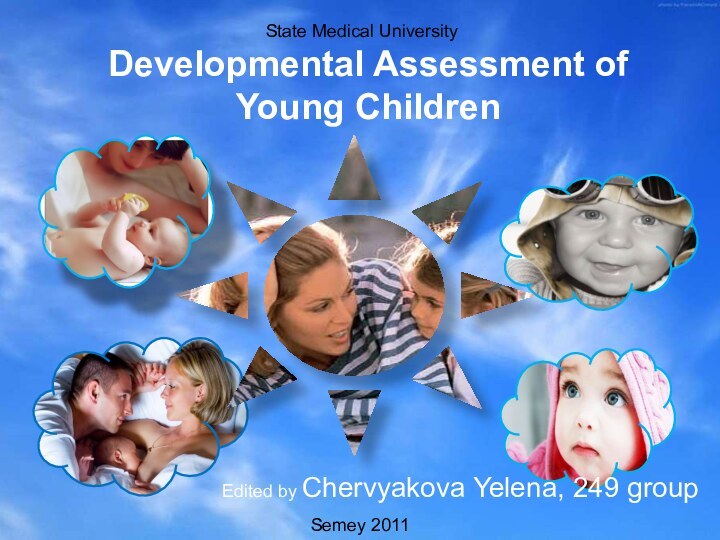


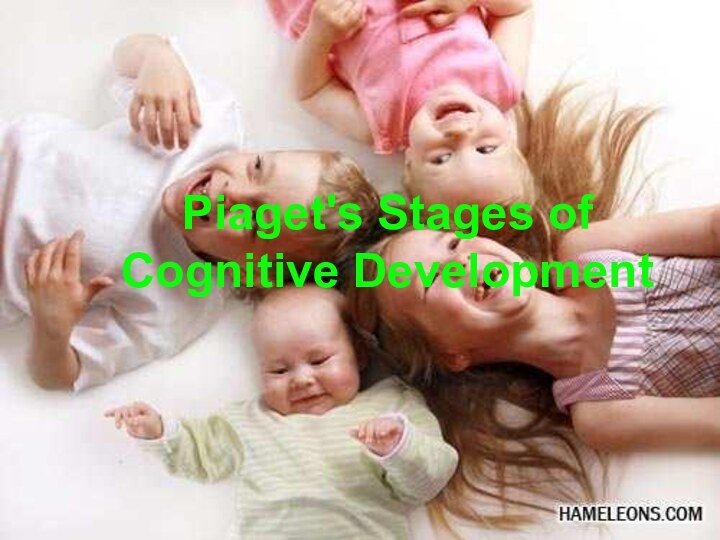

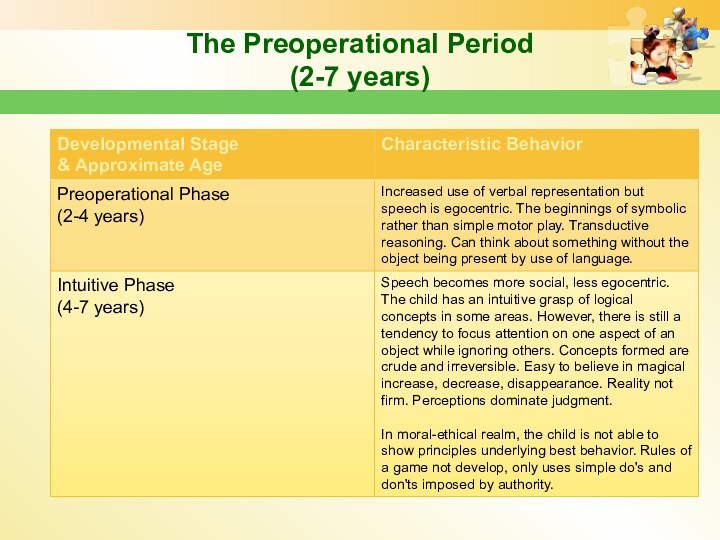
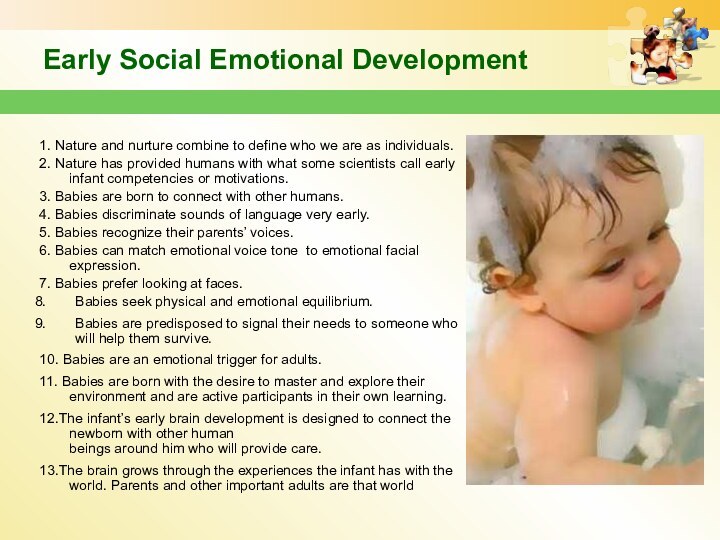

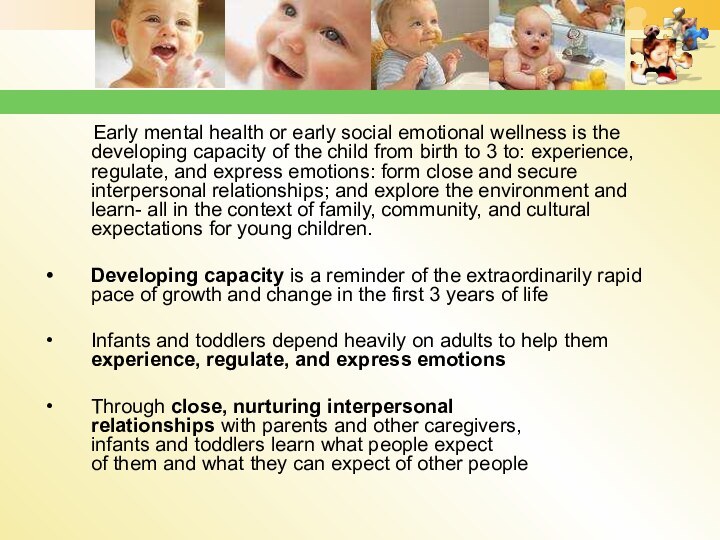
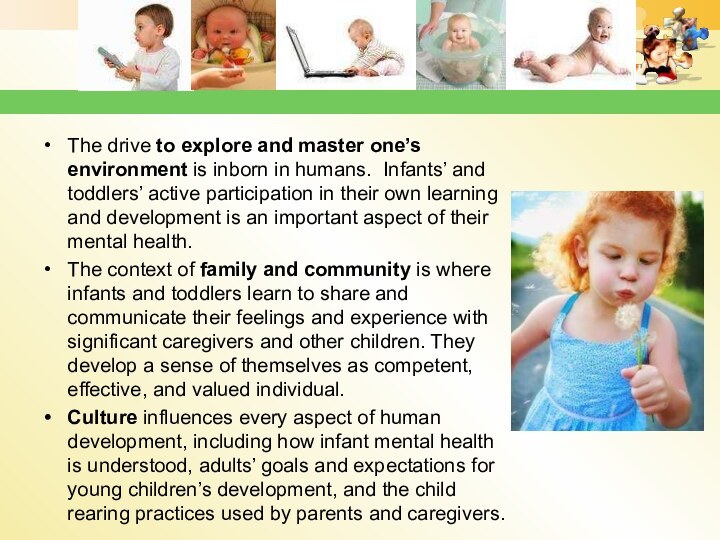

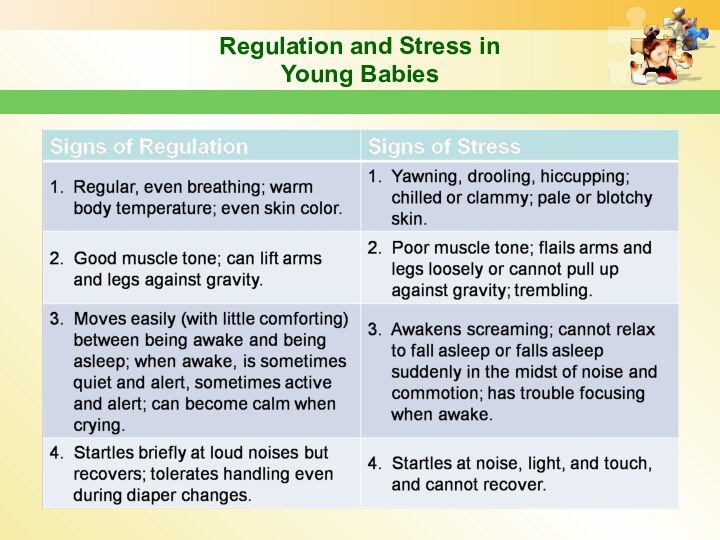
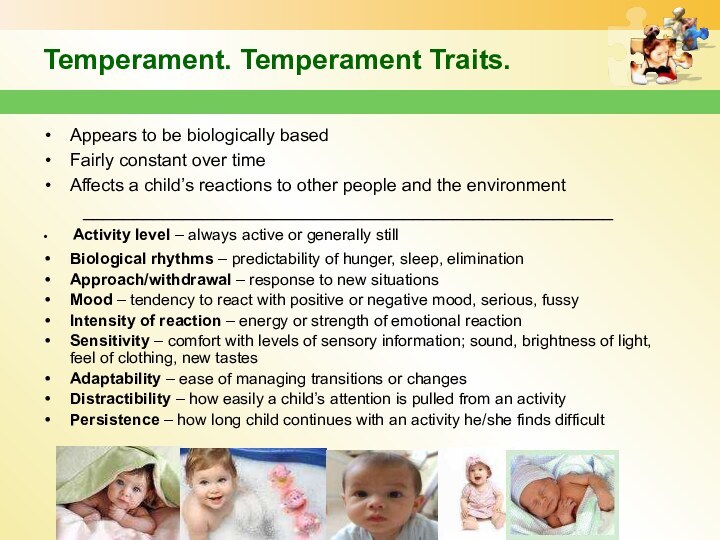
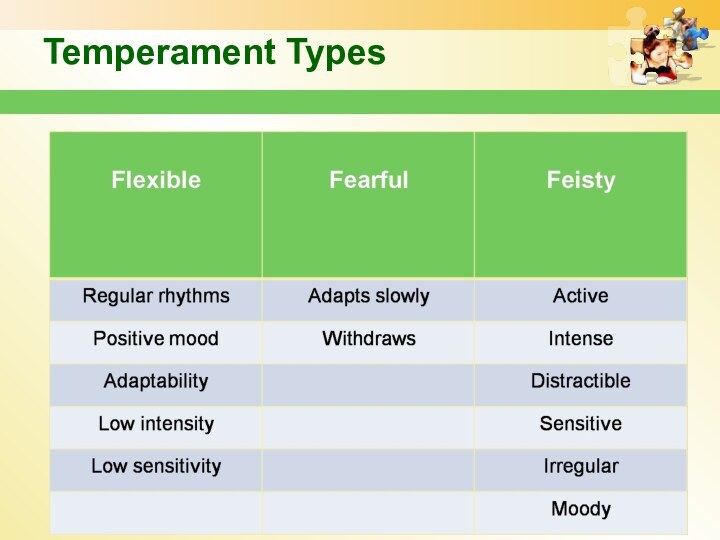
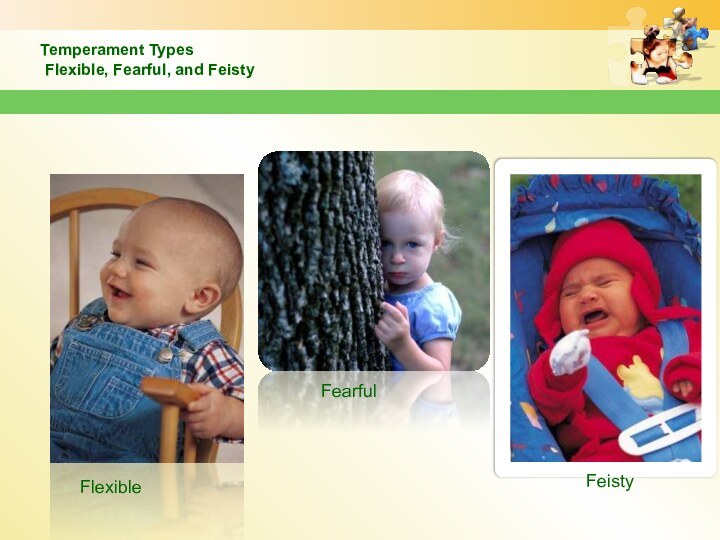
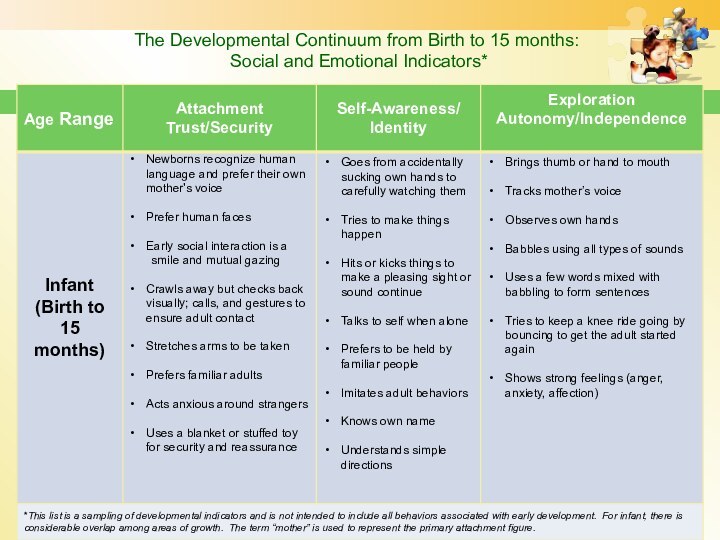
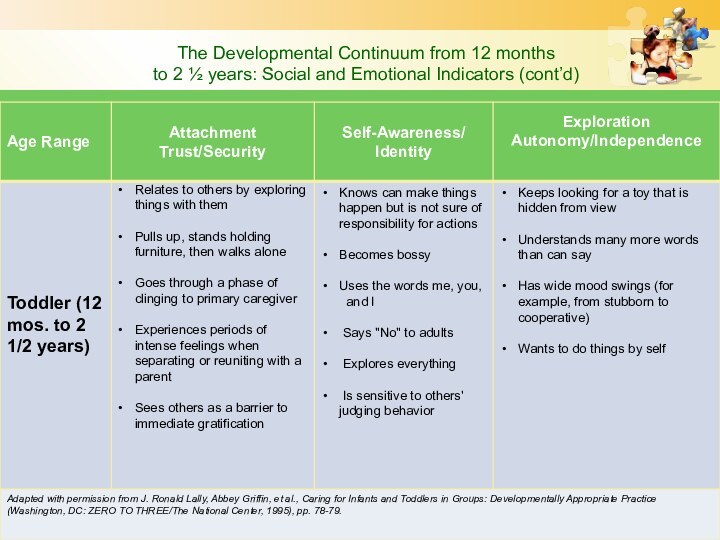

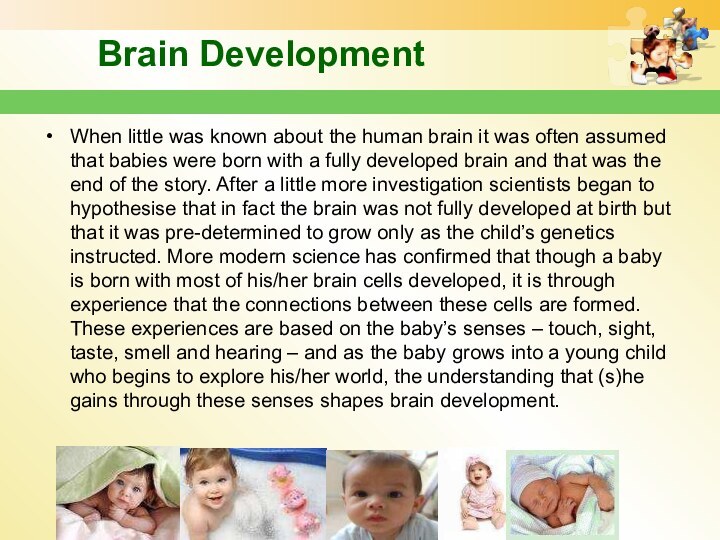
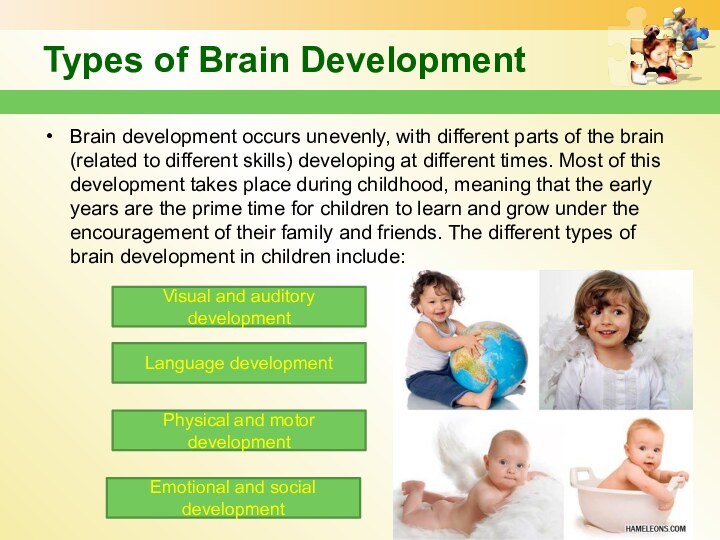
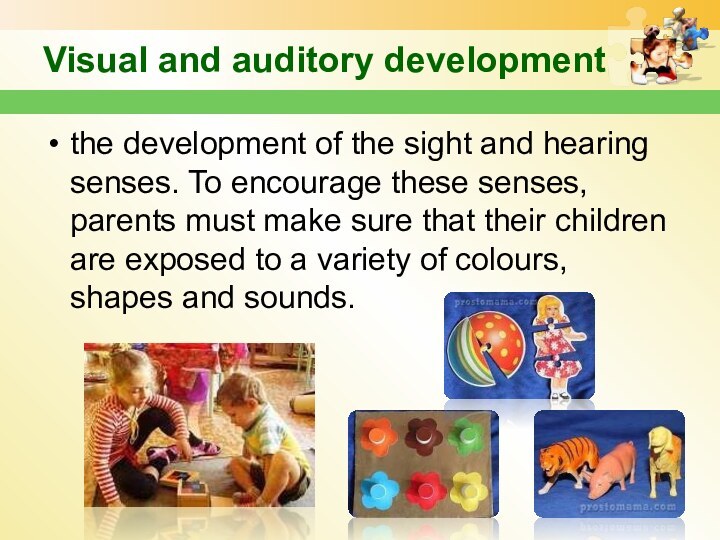

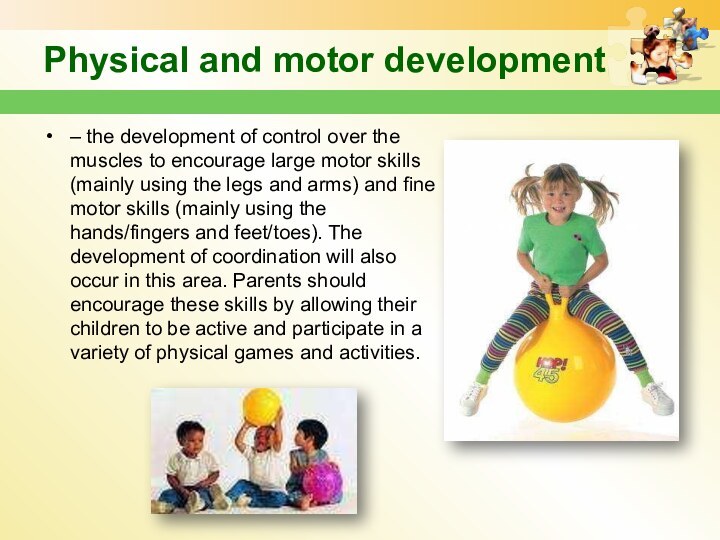
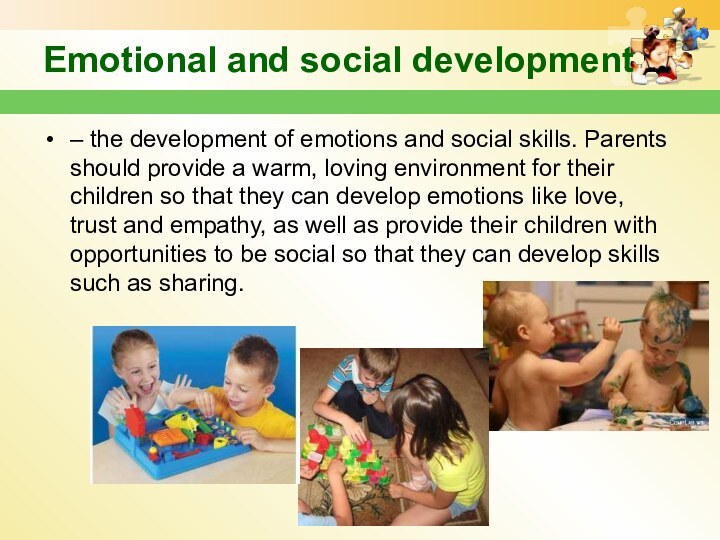

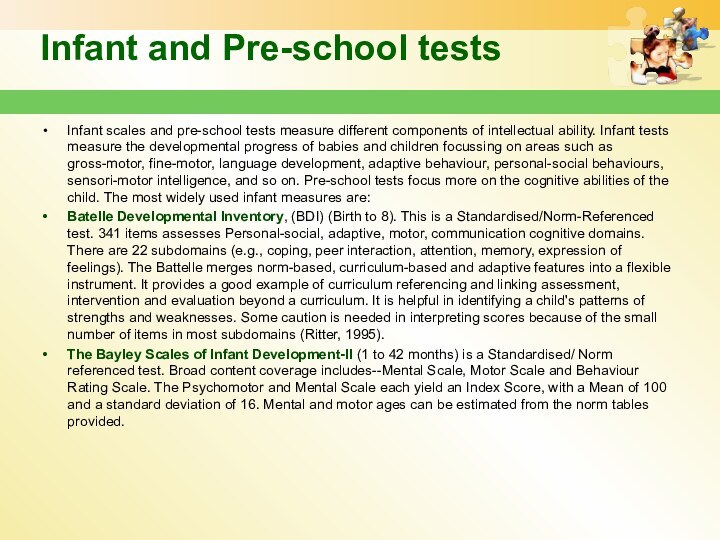
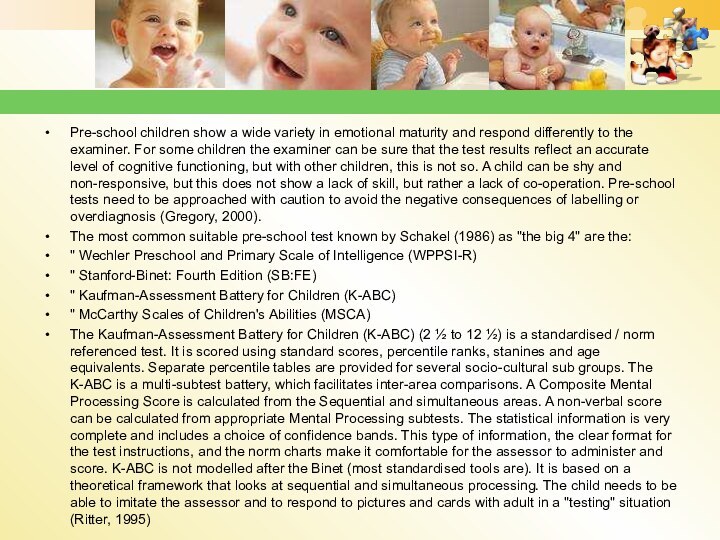
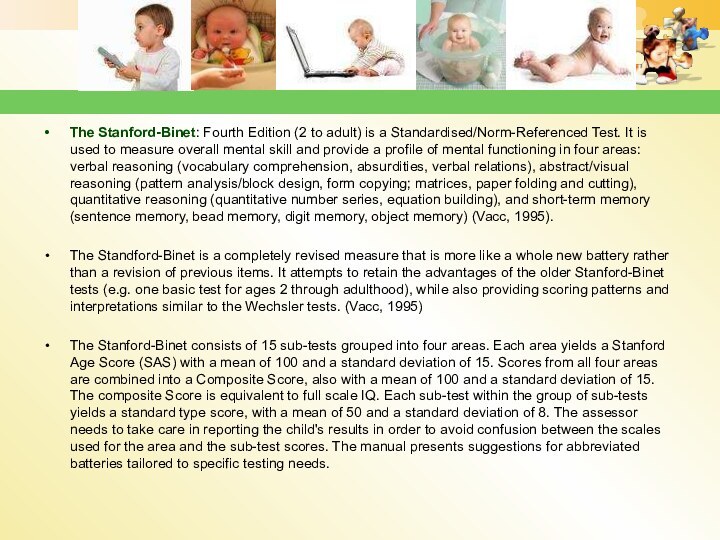

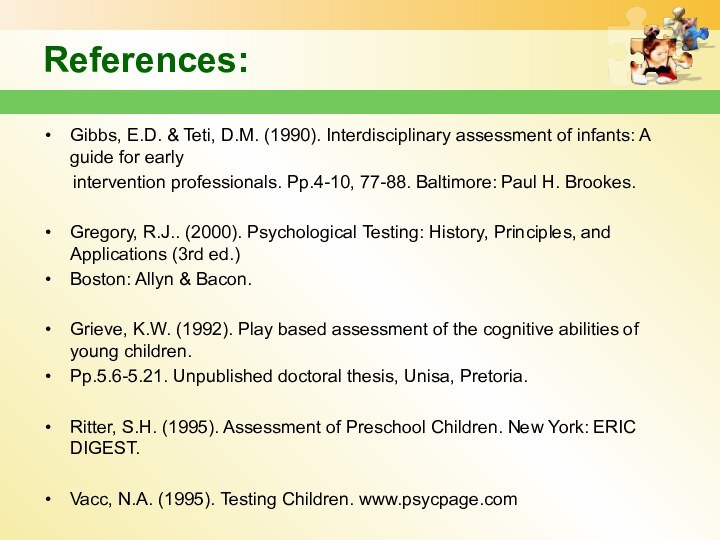
Слайд 3 The stages of intellectual
development formulated by Piaget appear to be related to
major developments in brain growth. The human brain is not fully developed until late adolescence or in the case of males sometimes early adulthood. We often expect children to think like adults when they are not yet capable of doing so. It is important that parents know what to expect from their child as they develop and to be sure that the expectations they may have for their child at a given age are realistic.
Слайд 7
Early Social Emotional Development
1. Nature and nurture combine
to define who we are as individuals.
2. Nature has
provided humans with what some scientists call early infant competencies or motivations.3. Babies are born to connect with other humans.
4. Babies discriminate sounds of language very early.
5. Babies recognize their parents’ voices.
6. Babies can match emotional voice tone to emotional facial expression.
7. Babies prefer looking at faces.
Babies seek physical and emotional equilibrium.
Babies are predisposed to signal their needs to someone who will help them survive.
10. Babies are an emotional trigger for adults.
11. Babies are born with the desire to master and explore their environment and are active participants in their own learning.
12.The infant’s early brain development is designed to connect the newborn with other human beings around him who will provide care.
13.The brain grows through the experiences the infant has with the world. Parents and other important adults are that world
Слайд 8 14. The family’s culture influences all areas of
a baby’s development, including the social emotional realm.
15.
Many factors can affect social emotional development, including developmental delays or serious health issues with the baby, or an environment with multiple risk factors (ex. poverty, substance abuse, adult mental health issues, domestic violence)
16. The baby’s communication of emotions and needs establishes the learning pathways in the brain that lead to all other physical, cognitive, and emotional learning.
Слайд 9 Early mental health
or early social emotional wellness is the developing capacity
of the child from birth to 3 to: experience, regulate, and express emotions: form close and secure interpersonal relationships; and explore the environment and learn- all in the context of family, community, and cultural expectations for young children.Developing capacity is a reminder of the extraordinarily rapid pace of growth and change in the first 3 years of life
Infants and toddlers depend heavily on adults to help them experience, regulate, and express emotions
Through close, nurturing interpersonal relationships with parents and other caregivers, infants and toddlers learn what people expect of them and what they can expect of other people
Слайд 10 The drive to explore and master one’s environment
is inborn in humans. Infants’ and toddlers’ active participation
in their own learning and development is an important aspect of their mental health.The context of family and community is where infants and toddlers learn to share and communicate their feelings and experience with significant caregivers and other children. They develop a sense of themselves as competent, effective, and valued individual.
Culture influences every aspect of human development, including how infant mental health is understood, adults’ goals and expectations for young children’s development, and the child rearing practices used by parents and caregivers.
Слайд 11 Three Major Elements of Social Emotional Wellness in
Infancy
Forming close and secure relationships
Experiencing, expressing, and regulating
emotionsExploring the environment and learning
Слайд 13
Temperament. Temperament Traits.
Appears to be biologically based
Fairly
constant over time
Affects a child’s reactions to other people
and the environment _____________________________________________________
Activity level – always active or generally still
Biological rhythms – predictability of hunger, sleep, elimination
Approach/withdrawal – response to new situations
Mood – tendency to react with positive or negative mood, serious, fussy
Intensity of reaction – energy or strength of emotional reaction
Sensitivity – comfort with levels of sensory information; sound, brightness of light, feel of clothing, new tastes
Adaptability – ease of managing transitions or changes
Distractibility – how easily a child’s attention is pulled from an activity
Persistence – how long child continues with an activity he/she finds difficult
Слайд 17 The Developmental Continuum from 12 months to 2
½ years: Social and Emotional Indicators (cont’d)
Слайд 19
Brain Development
When little was known about the human
brain it was often assumed that babies were born
with a fully developed brain and that was the end of the story. After a little more investigation scientists began to hypothesise that in fact the brain was not fully developed at birth but that it was pre-determined to grow only as the child’s genetics instructed. More modern science has confirmed that though a baby is born with most of his/her brain cells developed, it is through experience that the connections between these cells are formed. These experiences are based on the baby’s senses – touch, sight, taste, smell and hearing – and as the baby grows into a young child who begins to explore his/her world, the understanding that (s)he gains through these senses shapes brain development.
Слайд 20
Types of Brain Development
Brain development occurs unevenly, with
different parts of the brain (related to different skills)
developing at different times. Most of this development takes place during childhood, meaning that the early years are the prime time for children to learn and grow under the encouragement of their family and friends. The different types of brain development in children include:Visual and auditory development
Language development
Physical and motor development
Emotional and social development
Слайд 21
Visual and auditory development
the development of the
sight and hearing senses. To encourage these senses, parents
must make sure that their children are exposed to a variety of colours, shapes and sounds.
Слайд 22
Language development
the development of language and speaking skills.
Parents should talk, sing and read to their children
often, and respond to their children’s language attempts in order to foster this development.
Слайд 23
Physical and motor development
– the development of
control over the muscles to encourage large motor skills
(mainly using the legs and arms) and fine motor skills (mainly using the hands/fingers and feet/toes). The development of coordination will also occur in this area. Parents should encourage these skills by allowing their children to be active and participate in a variety of physical games and activities.
Слайд 24
Emotional and social development
– the development of
emotions and social skills. Parents should provide a warm,
loving environment for their children so that they can develop emotions like love, trust and empathy, as well as provide their children with opportunities to be social so that they can develop skills such as sharing.Слайд 25 Parents, as the primary care givers for young
children, can contribute to brain development by leading by
example. Speaking, reading and singing to young children will keep them engaged, while enjoying an active lifestyle and many different types of games will allow children to physically flourish. Providing opportunities for safe exploration, while at the same time providing a loving, warm home life, will encourage brain development in young children and hopefully set them on the road to a lifetime of happiness.
Слайд 26
Infant and Pre-school tests
Infant scales and pre-school tests
measure different components of intellectual ability. Infant tests measure
the developmental progress of babies and children focussing on areas such as gross-motor, fine-motor, language development, adaptive behaviour, personal-social behaviours, sensori-motor intelligence, and so on. Pre-school tests focus more on the cognitive abilities of the child. The most widely used infant measures are:Batelle Developmental Inventory, (BDI) (Birth to 8). This is a Standardised/Norm-Referenced test. 341 items assesses Personal-social, adaptive, motor, communication cognitive domains. There are 22 subdomains (e.g., coping, peer interaction, attention, memory, expression of feelings). The Battelle merges norm-based, curriculum-based and adaptive features into a flexible instrument. It provides a good example of curriculum referencing and linking assessment, intervention and evaluation beyond a curriculum. It is helpful in identifying a child's patterns of strengths and weaknesses. Some caution is needed in interpreting scores because of the small number of items in most subdomains (Ritter, 1995).
The Bayley Scales of Infant Development-II (1 to 42 months) is a Standardised/ Norm referenced test. Broad content coverage includes--Mental Scale, Motor Scale and Behaviour Rating Scale. The Psychomotor and Mental Scale each yield an Index Score, with a Mean of 100 and a standard deviation of 16. Mental and motor ages can be estimated from the norm tables provided.
Слайд 27 Pre-school children show a wide variety in emotional
maturity and respond differently to the examiner. For some
children the examiner can be sure that the test results reflect an accurate level of cognitive functioning, but with other children, this is not so. A child can be shy and non-responsive, but this does not show a lack of skill, but rather a lack of co-operation. Pre-school tests need to be approached with caution to avoid the negative consequences of labelling or overdiagnosis (Gregory, 2000).The most common suitable pre-school test known by Schakel (1986) as "the big 4" are the:
" Wechler Preschool and Primary Scale of Intelligence (WPPSI-R)
" Stanford-Binet: Fourth Edition (SB:FE)
" Kaufman-Assessment Battery for Children (K-ABC)
" McCarthy Scales of Children's Abilities (MSCA)
The Kaufman-Assessment Battery for Children (K-ABC) (2 ½ to 12 ½) is a standardised / norm referenced test. It is scored using standard scores, percentile ranks, stanines and age equivalents. Separate percentile tables are provided for several socio-cultural sub groups. The K-ABC is a multi-subtest battery, which facilitates inter-area comparisons. A Composite Mental Processing Score is calculated from the Sequential and simultaneous areas. A non-verbal score can be calculated from appropriate Mental Processing subtests. The statistical information is very complete and includes a choice of confidence bands. This type of information, the clear format for the test instructions, and the norm charts make it comfortable for the assessor to administer and score. K-ABC is not modelled after the Binet (most standardised tools are). It is based on a theoretical framework that looks at sequential and simultaneous processing. The child needs to be able to imitate the assessor and to respond to pictures and cards with adult in a "testing" situation (Ritter, 1995)
Слайд 28 The Stanford-Binet: Fourth Edition (2 to adult) is
a Standardised/Norm-Referenced Test. It is used to measure overall
mental skill and provide a profile of mental functioning in four areas: verbal reasoning (vocabulary comprehension, absurdities, verbal relations), abstract/visual reasoning (pattern analysis/block design, form copying; matrices, paper folding and cutting), quantitative reasoning (quantitative number series, equation building), and short-term memory (sentence memory, bead memory, digit memory, object memory) (Vacc, 1995).The Standford-Binet is a completely revised measure that is more like a whole new battery rather than a revision of previous items. It attempts to retain the advantages of the older Stanford-Binet tests (e.g. one basic test for ages 2 through adulthood), while also providing scoring patterns and interpretations similar to the Wechsler tests. (Vacc, 1995)
The Stanford-Binet consists of 15 sub-tests grouped into four areas. Each area yields a Stanford Age Score (SAS) with a mean of 100 and a standard deviation of 15. Scores from all four areas are combined into a Composite Score, also with a mean of 100 and a standard deviation of 15. The composite Score is equivalent to full scale IQ. Each sub-test within the group of sub-tests yields a standard type score, with a mean of 50 and a standard deviation of 8. The assessor needs to take care in reporting the child's results in order to avoid confusion between the scales used for the area and the sub-test scores. The manual presents suggestions for abbreviated batteries tailored to specific testing needs.
Слайд 29
Conclusion
Testing children is a difficult process in which
many factors have to be taken into account. In
the diverse societies in which many of us live each and every child has to be closely examined for cultural and social differences. The examiner has a huge responsibility to both the parents and the child to make the test as fair as possible. As assessment has a large role in society today in screening children for neurological impairment, mental retardation, and school readiness, it is essential that the examiner follows testing procedures properly and efficiently. Testing children is an arduous process where consent must be gained from the parents of the child, and all the information concerning the testing process, and results have to be carefully explained.Young children are so active an alert that the testing situation may become difficult, and drawn out. As I found out, testing a child is not as easy as many people might think, and requires patience, control and much persuasion. Children are constantly exploring their worlds, and an examiner may not be an interesting part of this world, forcing the child to find more interesting stimuli. It is important for an assessor to chose a suitable test for each particular child, and to explore documents from parents and significant others that may aid the assessment situation.
Assessment is important if there is any sign that a child is not developing normally and at the correct pace. Early detection of problems is critical and tests may aid in this detection.


